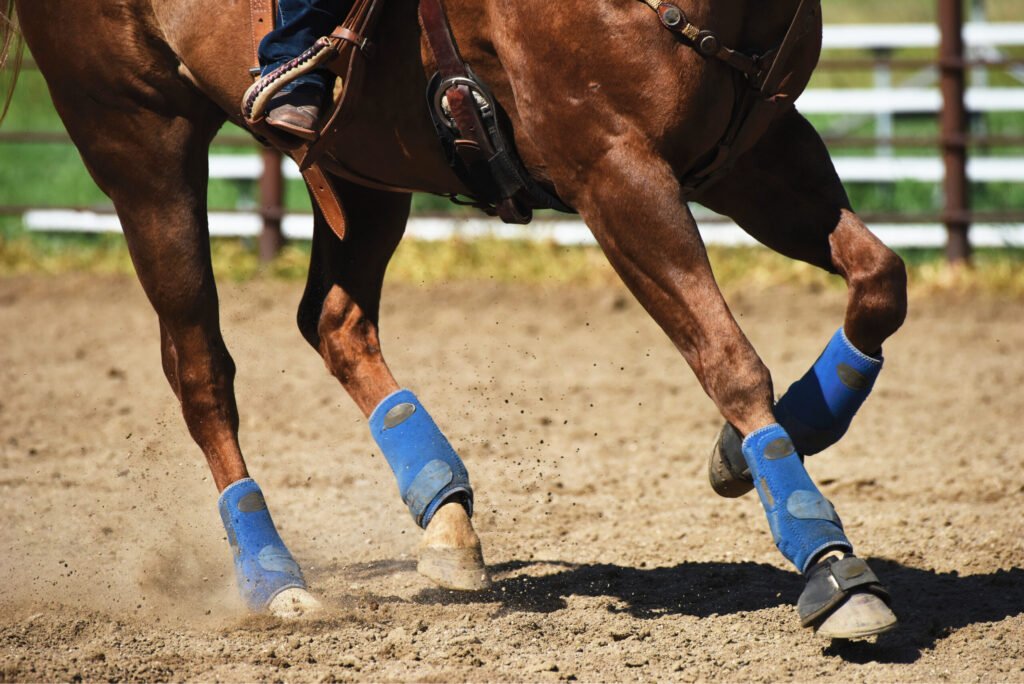If you have a senior horse, that’s fantastic! Older horses bring a wealth of experience and a calm temperament that make them excellent riding or competition companions. However, due to their age and the wear and tear on their bodies over the years, they often require extra care, particularly when it comes to joint health and preventing leg injuries compared to younger horses.
Senior horses are especially susceptible to leg injuries because their legs bear the most weight and strain during work. Additionally, their legs have more exposed joints and soft tissue structures.
Common Leg Injuries in Senior Horses
Due to the cumulative damage they have experienced, senior horses are more prone to a variety of leg injuries, ranging from manageable inflammation to more serious injuries.
The most common leg injuries for senior horses include:
• Injury to the inferior check ligament of the deep digital flexor tendon
• Desmitis, or ligament inflammation
• Digital flexor tendon sheath injuries
• Suspensory ligament desmopathy
• Superficial digital flexor tendonitis
• Injuries due to skin wounds, such as dermatitis
• Osteoarthritis
LEARN MORE ABOUT JOINT HEALTH AND WHEN TO CONSIDER JOINT INJECTIONS

Daily Leg Care and Injury Prevention for Senior Horses
To prevent many leg injuries in senior horses, it’s essential to practice proper daily maintenance and management. This includes how you prepare for exercise and how you assist your horse in recovery.
Warm up and cool down: It’s crucial to warm up before engaging in intense exercise or maneuvers with any horse, but especially with older horses to avoid injuries. Even if you can’t complete a full ride, ensure you prioritize a warm-up and cool-down to prepare your horse’s muscles and supporting structures for work and aid in their recovery.
Leg up: Senior horses may need more time to build up to intense exercise compared to younger horses. They are more prone to inflammation, tendon, and ligament injuries, so providing ample time for a gradual increase in activity before engaging in competitive or strenuous exercise is important.
Hoof care: While not part of the leg, hooves are the foundation of your horse. Neglecting proper hoof care can have negative effects on your senior horse’s overall health. Maintain a consistent hoof care schedule with your farrier who understands the specific needs of older horses.

Supplements: Glucosamine, chondroitin sulfate, hyaluronic acid, and MSM can provide additional joint support for senior horses. These supplements are often recommended for horses in the early stages of osteoarthritis to manage pain and slow the progression of the disease.
Pay attention: Senior horses may show signs of discomfort or injury through changes in their gait or behavior. It’s crucial to be vigilant and address any issues promptly. If any problem persists, consult your veterinarian.
By caring for your senior horse diligently, you can help them maintain a strong and resilient body. Despite their increased susceptibility to certain leg injuries and degenerative conditions, senior horses can continue to be excellent riding companions in the long term.
LEARN HOW TO READ YOUR HORSE’S FEET
Advanced Therapies for Senior Horse Recovery and Maintenance
Due to their age and the potential for slower recovery, senior horse owners may overlook preventative care methods. However, older horses, aside from high-performance athletes, can benefit greatly from advanced therapies.
Hydrotherapy: Utilizing water to reduce a horse’s body weight during exercise can be beneficial for physical therapy after an injury. Swimming, water treadmills, and cold-water therapy are effective ways to keep senior horses active without straining their joints.
Electromagnetic therapy: Both static and pulsed electromagnetic field (PEMF) therapy can aid in bone healing, cartilage cell regeneration, pain reduction, and inflammation management in senior horses.
Heat and cold: Applying heat or cold can help reduce inflammation and alleviate pain in senior horses. Cold wraps or hosing can be useful after exercise, while heat can improve circulation for healing during recovery.
Compression: Using compression sleeves or wraps on your horse’s legs can improve drainage, reduce swelling, and manage pain, particularly after exercise or for horses that spend extended periods in stalls.
MORE ON JOINT HEALTH FOR TRAIL HORSES

